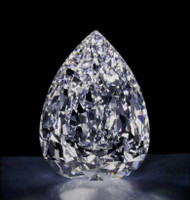Famous Diamonds Throughout the World
Posted by Koorosh Daneshgar on Feb 21st 2018
World's most famous diamonds
Today we are taking a brief detour through the interesting world of famous diamonds throughout the world. We will discuss what made them famous, specifics about the diamonds and any lore or records these diamonds may have set. Diamonds set records or become famous all the time. So, for the sake of this blog post, we are going to limit it to the best of the best.
The Golden Jubilee
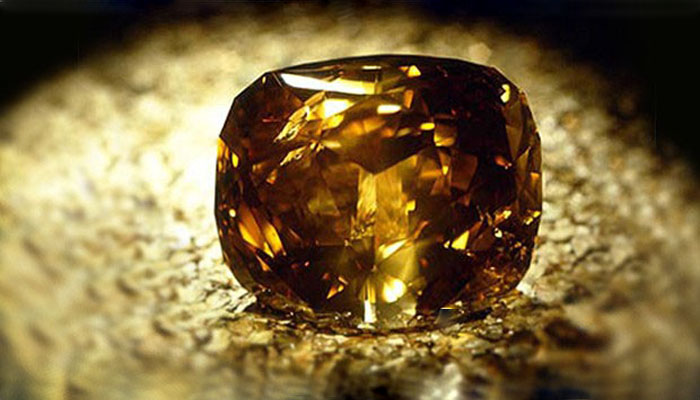
Let us start with the record holding diamond for the largest, finished,
cut, and faceted diamond in the world. This fancy yellow-brown diamond weighs a
whopping 545.67 carats and was discovered in The Premier Mine in 1985. The
Premier Mine, sometimes called the Cullinan Mine, is located in the Guateng
province of South Africa and is the sourcing place for several famous diamonds
throughout the world, including multiple diamonds on our list. The diamond was
cut by Gabriel Tolkowsky, commissioned by De Beers, over a time-span of two
years. The stone was given the Papal Blessing by Pope John Paul II and blessed
by both The Supreme Imam an The Supreme Buddhist Patriarch in Thailand before
being gifted to King Bhumibol Adulyadej of Thailand on his 50
th
coronation anniversary. It was the king who gave the name “The Golden Jubilee”
to a diamond that had previously only been known as “The Unnamed Brown.” The
diamond is now part of the Crown Jewellers of Thailand and does occasionally
travel the world in exhibits.
The Hope Diamond
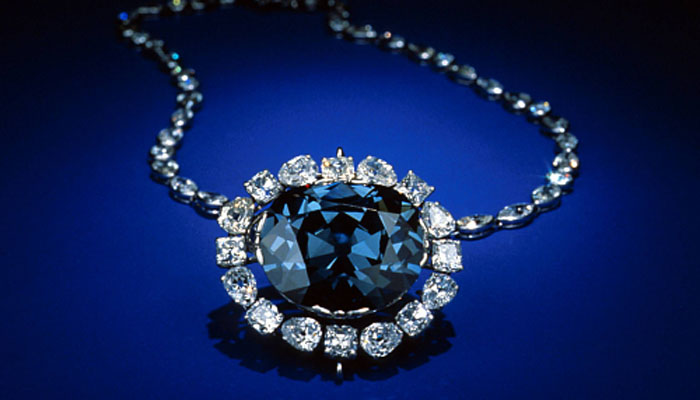
From the largest cut diamond in the world, to the most famous diamonds in history. The Hope Diamond is known throughout the world for several reasons, it’s worldwide history, it’s beautiful and incomparable color, and the curse of The Hope Diamond.
The first known owner (it is believed the diamond had other owners prior) of the diamond, Jean-Baptiste Tavernier, claimed that the rough diamond was found in the Kollur Mine in the Guntur district of Andhra Pradesh during the 17 th century. The stone quickly gained fame under the moniker of “The Tavernier Blue,” an approximately 112-115ct triangular shaped diamond. The diamond, around 1669, was sold to King Louis XIV of France (along with approximately 1000 other diamonds sold for approximately 147 kilograms of pure gold and a nobleman’s title for Tavernier) who commissioned his court jeweler, Sieur Pitau, to recut the diamond. The result was a 67.125ct diamond that was set in a cravat pin for the king where it became known as “The French Blue.” The diamond was passed down (and reset into other jewelry) through the royal line until break-ins to the royal storehouse during the French Revolution caused the diamond to go missing.
The first known resurgence of the diamond was briefly in 1812, although speculation abounds about who the owner was at the time. Later, the diamond eventually found a purchaser. In 1839 London banker Thomas Hope purchased the diamond and it was eventually given his namesake. The Hope Diamond remained in the Hope family until 1902 where it changed hands several times. In 1910 it fell into the hands of Pierre Cartier. It is believed that “curse” of The Hope Diamond was invented by Cartier as a marketing scheme. It was believed that tragic death would befall anyone who wore the diamond. The now famous 45.52ct, fancy dark greyish-blue, VS1 diamond was last owned by the late Harry Winston, who donated the diamond to the Smithsonian Institute’s National Museum of Natural History.
The Pink Star
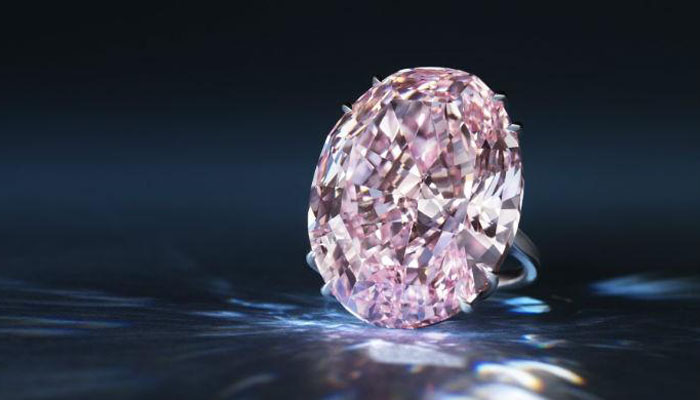
The Hope Diamond may have been deemed priceless and will likely never go up for sale in our lifetime. However, we are now going to talk about the diamond that recently set the record for the most expensive diamond ever sold. The Pink Star. The 59.6ct, internally flawless, and intense pink colored diamond is the largest diamond of it’s kind ever graded by the Gemological Institute of America. The raw diamond was found in South Africa by De Beers in only 1999; and, like The Hope Diamond and The Golden Jubilee, was cut over a period of 2 years. Formerly known as The Steinmetz Pink, The Pink Star went up for auction in April of 2017 and set the record for the most expensive diamond ever sold with a bid of 71,200,00USD. The diamond is now owned by jeweller Chow Tai Fook and has been renamed the “CTF Pink Star.”
The Cullinan Diamonds
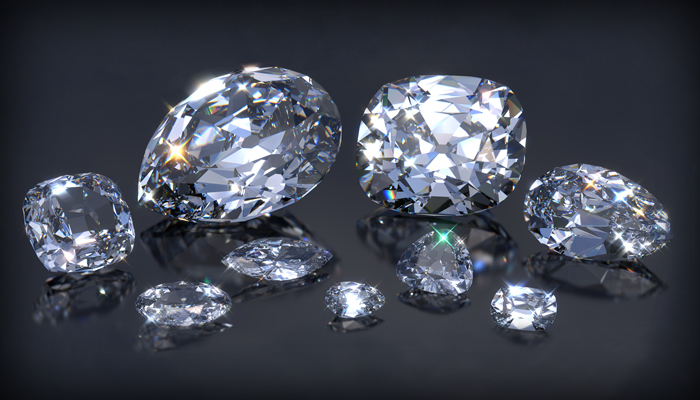
The Cullinan Diamonds are a collection of nine diamonds that were cut from the largest piece of gem-quality rough diamond in history. The 3106.75ct rough diamond was found in the Premier Mine in South Africa (the same mine that produced the Golden Jubilee) in 1905 and was named after the founder of the mine, Sir Thomas Cullinan.
The rough diamond was purchased by the Transvaal government as a gift to King Edward VII as “a token of the loyalty and attachment of the people of the Transvaal to His Majesty's throne and person.” King Edward VII then tasked the cutting of the diamond to the Asscher Brothers of Amsterdam. Three people worked 14 hours per day for 8 months to complete the 9 primary Cullinan stones, 86 minor brilliants and 9.5ct unpolished fragments. The 9 primary stones formed from the Cullinan are currently part of the Crown Jewels of England and reside in the Tower of London.
Cullinan I- Also known as The Great Star of Africa, the Cullinan I is a pendeloque-cut brilliant (pear-shaped modification of the round brilliant cut) 545.67 carat diamond. This diamond was the largest cut diamond in the world until it was usurped by The Golden Jubilee. The diamond currently sits in the Sovereign’s Scepter but can be removed and set in a brooch with the Cullinan II.
Cullinan II- The Cullinan II is known as The Second Star of Africa and takes the shape of a cushion-shaped brilliant at 317.4 carats. The diamond is mounted in the Imperial State Crown but can be removed and worn, like the Cullinan I, in a brooch. The Cullinan II is still ranked in the top 10 largest diamonds in the world.
Cullinan III- The Lesser Star of Africa, as the Cullinan III is known, is a 94.4 carat pear-shaped diamond. Currently the diamond is most frequently worn in a pendant brooch with the Cullinan IV.
Cullinan IV- Also known as The Lesser Star of Africa, this square-cut diamond weighs 63.6 carats. The diamond is most frequently worn with the Cullinan III in a brooch.
Cullinan V- The Cullinan V is an 18.8 carat heart-shaped stone that currently sits in a brooch that can be fitted onto the necklace that holds the Cullinan VII.
Cullinan VI- The Cullinan VI is an 11.5 carat marquise-cut stone that sits in a brooch with the Cullinan VIII that can be added to the Delhi Durbar necklace that holds the Cullinan VII.
Cullinan VII- This 8.8 carat marquise-cut diamond sits as a pendant in the Delhi Durbar necklace.
Cullinan VIII- This 6.8 carat oblong-cut diamond sits in a brooch with the Cullinan VI and can be added to the Delhi Durbar necklace.
Cullinan IX- A 4.39 carat pendeloque-cut diamond, this is the smallest of the Cullinan diamonds. This diamond currently sits in a platinum ring known as The Cullinan IX Ring.
The Taylor-Burton Diamond
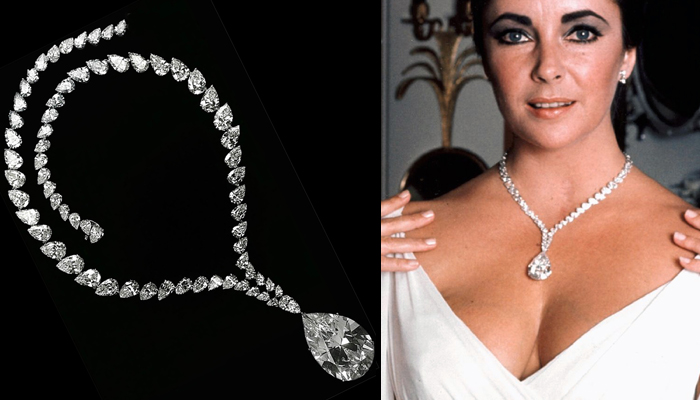
Now, we will take a break from diamonds that are famous for the records they set and talk more about a diamond that is popular due to its significance from its relation to popular culture. Elizabeth Taylor is one of the most recognizable names in the world. She was a world-renowned beauty, a talented actress, and had a jewelry collection that could rival royalty.
The most famous piece of jewelry in her collection was a necklace featuring a beautiful 69.42 carat pear-shaped diamond. This beautiful diamond, found in the Premier Mine was cut by none other than Harry Winston himself. The Diamond eventually found it’s way to auction where it set the record for the most expensive diamond sale at auction at the time for $1,050,000. The buyer of the diamond was the Cartier parent company and the diamond was thus named “The Cartier Diamond.” However, the diamond was only theirs for less than 24 hours. Richard Burton, Taylor’s husband on two separate occasions, had been a fierce competitor to Cartier at the auction and paid $1,100,000 to buy it from them. While the name of the diamond was officially changed to “The Cartier-Burton Diamond,” it gained popular public recognition as “The Taylor-Burton Diamond” and the name become the common name for the diamond. The diamond is now owned by Robert Mouawad of the Jewellers Mouawad and has since been recut to its current size of 68 carats.
Moussaieff Red

After many of the diamonds we have discussed above, the triangular-cut Moussaieff Red Diamond may not sound very impressive. Actually, at only 5.11 carat, the internally flawless diamond may seem positively minuscule. However, this incredible colored diamond, formerly known as The Red Shield Diamond, is a diamond of legend. Graded by the Gemological Institute of America as a fancy red, it currently holds the distinction of being the largest diamond of pure red coloration in existence. Very few fancy red diamonds have surfaced, and very few of them exceed the one carat mark. The fancy red grade is the rarest of all naturally occurring fancy diamond colors. The rough diamond was discovered by a Brazilian farmer in the Abaetezinho River in an area called Alto Paranalba. The diamond was purchased and cut by the William Goldberg Diamond Corporation before being purchased in 2001 or 2002 by Shlomo Moussaieff (an Israeli-born jewelry dealer in London). The diamond is still owned by Moussaieff Jewellers Ltd. but does sometimes travel on display with other famous diamonds.
Koh-i-Noor
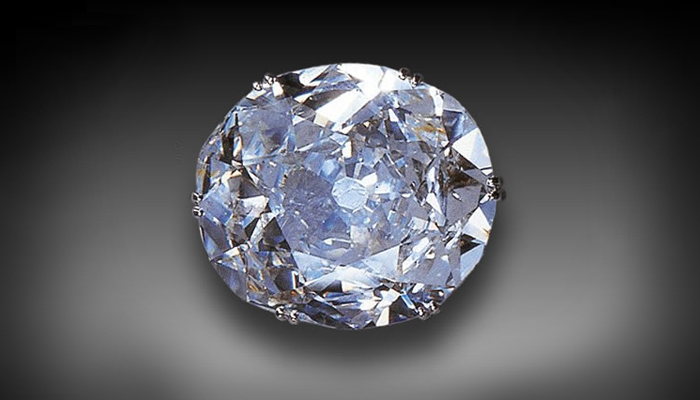
Like the Elder Wand from Harry Potter, this diamond has a traceable history through centuries. Passing from hand to hand as a result of bloody battles. The original finding of he diamond is not well recorded; however, Sanskrit writings can be found as far back as 5,000 years describing the diamond.
Originally cut down to 186 carats, it derived from the largest rough diamond at the time: approximately 793 carats. The diamond is currently part of the Crown Jewels of England, but this is heavily contested by the nation of India who feel the diamond was stolen from them and represents a great piece of Indian history and culture. The diamond was originally given to the Indian Maharaja in 1830 by the King of Afghanistan in exchange for military assistance in his quest to reclaim the throne. The way the Koh-i-Noor came into the possession of British royalty is believed it was a gift from the new 13-year-old Maharajah Duleep Singh. However, it is still regularly insisted by the Indian government that the diamond be returned amicably, especially as partial reparations of British colonization of the country.
One of the most fascinating aspects of the Koh-i-Noor is, like The Hope Diamond, is the belief that it is cursed. While there are many that believe that wearing the diamond will give you the power to rule, there are still others that believe that wearing the diamond will bring you death and misfortune. This is widely believed to be a result of the history of death and warfare associated with the diamond. The diamond, however, is said to provide protection for any woman who wears it. Which may be why, after it was commissioned to be cut down to its current size of 105.6 carats by Prince Albert, the colorless diamond found it’s way into the Royal British Crown worn by his queen.
The Centenary Diamond
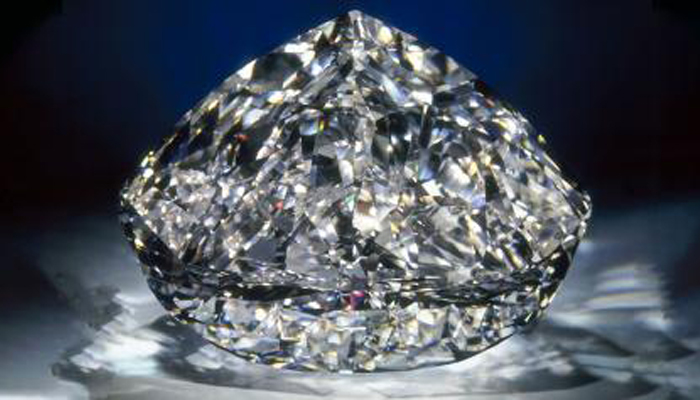
The Centernary Diamond was only discovered in 1986 in, you guessed it: The Premier Mine. The diamond was found using cutting edge x-ray technology and was unveiled at the centennial celebration for De Beers, which is what gave the diamond its name. The task of cutting down the 599 carat raw diamond fell to Gabi Tolkowsky who was commissioned by De Beers. When the diamond was finally completed, it set the record for the biggest colorless and flawless finished diamond currently in existence.
The Centenary Diamond’s most recent claim to fame is that is no one knows where it is. The last time the diamond was on display was in the Tower of London for several years. However, it has not been seen since then. It is believed that it may have been purchased from De Beers; however, due to their strict policy of anonymity, it is impossible to confirm his rumor. To this day, no one knows who, if anyone, owns the Centenary Diamond.
We'll help you to design your dream engagement ring without stress and spending countless hours searching for your perfect ring. All you need to do is click on "Free Consultation" to get started.
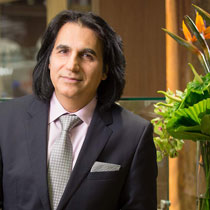
By: Koorosh Daneshgar CEO/Design Chief
Email: Koorosh@WeddingBandscompany.com
Phone: 312-920-0726
Business Text Message Line:312-785-8333

